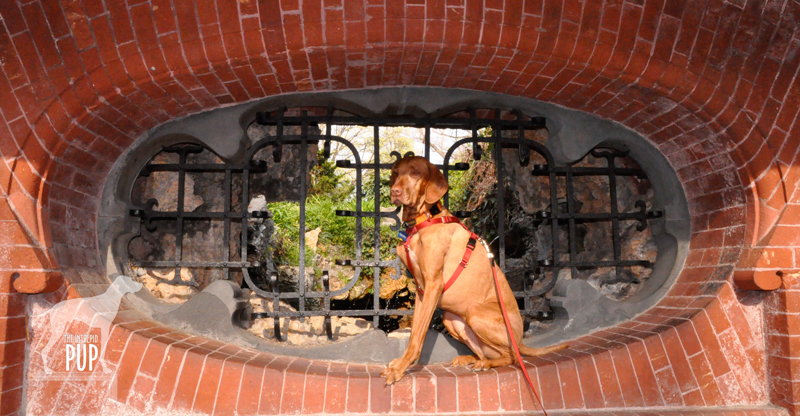
Today—April 26, 2012—is Frederick Law Olmsted Sr.’s 190th birthday. The Intrepid Pup is pretty sure Olmsted’s birthday isn’t widely celebrated nationwide, but it should be! After all, it’s because of Frederick Law Olmsted Sr. (1822-1903) that the terms landscape architecture, green space, and parkway are even part of our vocabulary.
Olmsted’s life is well-chronicled. An early writing and publishing career took the turn to landscape design when in 1857 he secured the position of superintendent of New York City’s Central Park. With a design competition for the park underway, Olmsted was approached by London architect Calvert Vaux (1824-1895), and together they submitted what ended up being the award-winning plan. In 1865 they formed Olmsted, Vaux & Company, a partnership lasting seven years, but eventually Olmsted’s reputation eclipsed Vaux’s. Olmsted would go on to found his own firm, which he relocated to the Boston suburbs in 1883. Today, the National Park Service maintains Olmsted’s Brookline design office “Fairsted” as the Frederick Law Olmsted National Historic Site. Prior to Olmsted’s retirement in 1897, he and his firm had executed approximately 500 commissions, notably including the landscape design for the 1893 Chicago World’s Fair, Boston’s Emerald Necklace park lands, Detroit’s Belle Isle, the Stanford University campus, and Asheville’s Biltmore Estate. Olmsted’s nephew/stepson John Charles Olmsted (1852-1920) and son Frederick Law Olmsted Jr. (1870-1957) joined the firm and became full partners, successfully perpetuating Olmsted’s original design aesthetics and the family business well into the 20th century. Both men were founding members of the American Society of Landscape Architects. Frederick Jr. in particular became an adviser to a nascent National Park Service, and his influence can be readily identified in such parks as Yosemite and Acadia.
* * *
Where there are parks, there is Tavish, so clearly the Intrepid Pup thing to do in honor of Olmsted Sr.’s birthday is to visit an Olmsted landscape. In Tavish’s case, it’s the grounds of the United States Capitol.
The mid 19th-century Capitol expansion responsible for adding the massive wings and installing a larger dome also necessitated attention to the surroundings. Frederick Law Olmsted Sr. presented a landscaping plan in 1874 and was brought in to oversee its implementation. What were by that time hallmarks of Olmstedian design—scenery, winding paths, integrated topography—were once again employed to the task at hand. Olmsted was cognizant that the Capitol itself was to be the centerpiece of the immediate landscape and thus created a pastoral expanse. He meticulously laid out the walkways and placement of more than 7,800 trees to create very intentional vistas. While he went fairly minimalist on exterior fountains and statuary so as not to distract or detract from the Capitol itself, Olmsted specified ornamental lamps and wrought iron streetcar shelters (thankfully still in place…see photo below!) to subtly harmonize with the overall design. In 1879, he began work on an open-air, hexagonal brick Summerhouse on the west, Senate-side lawn. An absolutely enchanting structure, neatly embedded among heavy vegetation along a sinuous path, it’s probably a safe assumption that many of the 3.5 million modern-day annual visitors to the Capitol never notice it. Yet step inside the Summerhouse, and it’s a little world unto its own. The thick brick walls keep it cool on even the sultriest of DC days, and the stone benches set into the alcoves can accommodate up to 22 people. In the center is a burbling fountain; originally, the cascading water was supposed to activate a series of musical chimes, but the mechanics were never quite right, so that feature was abandoned. Two oblong, rondel-like windows perforate the walls, but the third—fronted by a lattice of ornamental grillwork—affords the view of a small grotto (see Tavish’s photo above). The effect is not unlike that of peering through the opening of one of those panoramic sugar Easter eggs to behold a magical scene.
Olmsted intended the Summerhouse as a place for travelers to regroup and perhaps ladle refreshment from the fountain. More than a century later, the Summerhouse’s role is unchanged, and it’s an apt spot for reflecting upon the considerable Olmsted legacy.
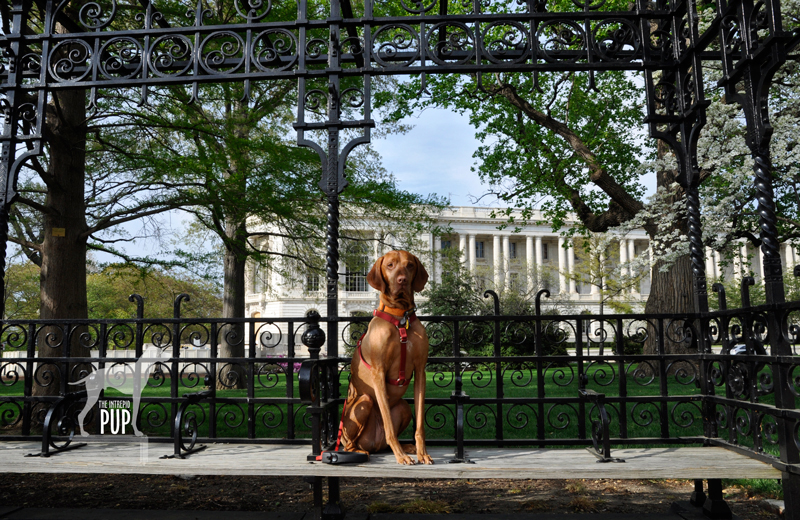
Dogging the Details
38°53′29.33″N, 77°0′38.33″W
The Summerhouse on the grounds of the U.S. Capitol, Washington, DC
 The U.S. Capitol grounds, including the Summerhouse, are dog-friendly, but you must keep dogs on leash and pick up any waste. It’s worth noting that, for security reasons, you won’t find public trash receptacles in close proximity to the Capitol perimeter.
The U.S. Capitol grounds, including the Summerhouse, are dog-friendly, but you must keep dogs on leash and pick up any waste. It’s worth noting that, for security reasons, you won’t find public trash receptacles in close proximity to the Capitol perimeter.
The central fountain is no longer fed by a spring, and the three drinking fountains surrounding it supply filtered DC water, so it’s safe for drinking…or for refilling a travel bowl for your dog!
The Olmsted grounds score a “1” on the Intrepid Pup Wag-a-Meter as they’re expansive, scenic, walkable, and easily accessible.

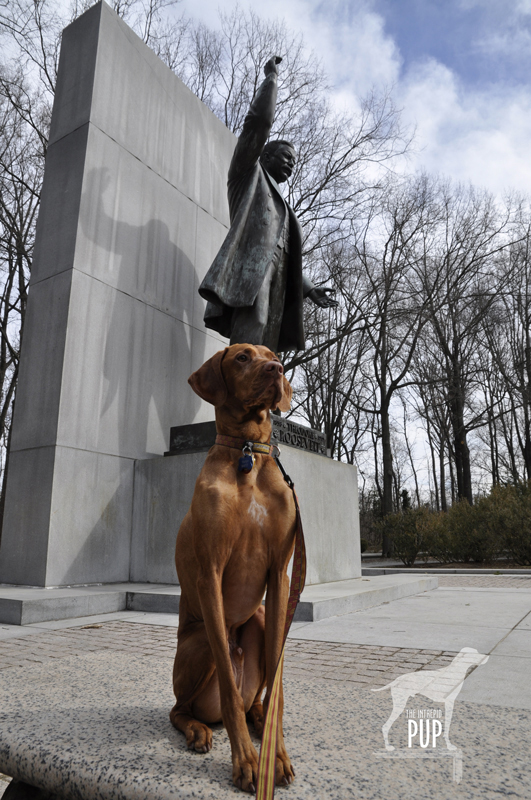 If you’re as big a fan of America’s national parks as
If you’re as big a fan of America’s national parks as 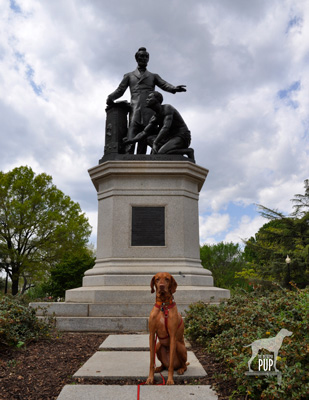


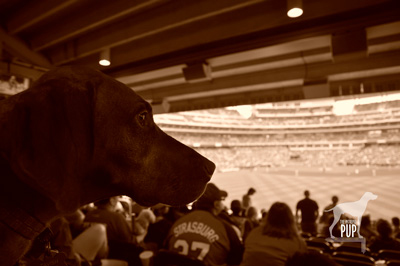 It’s Opening Day for Major League Baseball 2012! For many, it signals a prelude to summer with baseball being the quintessential pastime, as American as Mom and apple pie. But did you know your dog can get a piece of the action, too? For the 2012 season, a record 16 MLB franchises are welcoming dogs to their ballparks as part of regular season, individual game promotions. Kudos to the Astros, Athletics, Braves, Cardinals, Dodgers, Giants, Indians, Marlins, Mets, Nationals, Padres, Pirates, Rangers, Reds, Royals, and White Sox for embracing dogs and dog lovers among their fan bases!
It’s Opening Day for Major League Baseball 2012! For many, it signals a prelude to summer with baseball being the quintessential pastime, as American as Mom and apple pie. But did you know your dog can get a piece of the action, too? For the 2012 season, a record 16 MLB franchises are welcoming dogs to their ballparks as part of regular season, individual game promotions. Kudos to the Astros, Athletics, Braves, Cardinals, Dodgers, Giants, Indians, Marlins, Mets, Nationals, Padres, Pirates, Rangers, Reds, Royals, and White Sox for embracing dogs and dog lovers among their fan bases!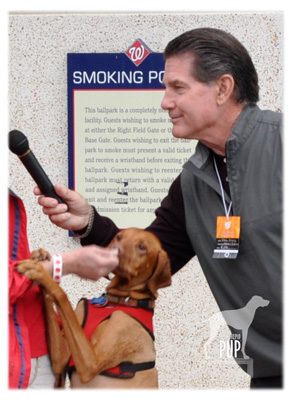
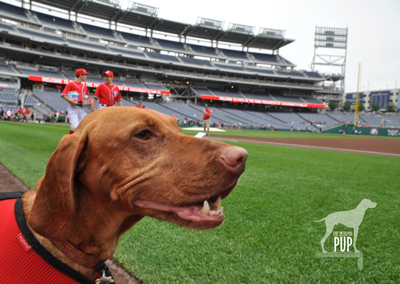

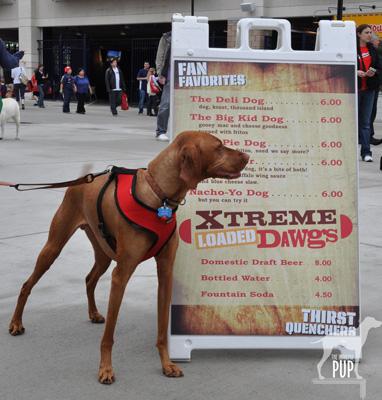 Parking is ample, but fees directly correlate to proximity to the ballpark and can get pricey. The clear message here is to walk, bike (yes, there are numerous bike racks outside the stadium!), take Metro to the Navy Yard stop, board a bus, or hop a DC
Parking is ample, but fees directly correlate to proximity to the ballpark and can get pricey. The clear message here is to walk, bike (yes, there are numerous bike racks outside the stadium!), take Metro to the Navy Yard stop, board a bus, or hop a DC 








